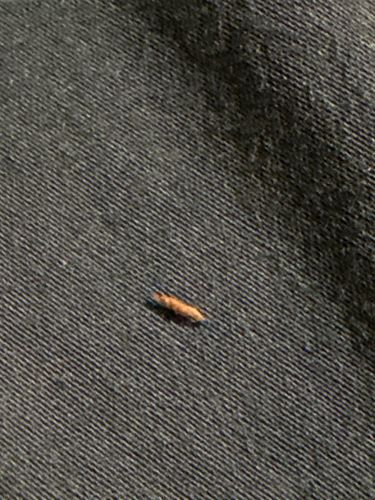Carpet Beetle Larva (most likely Black Carpet Beetle or Varied Carpet Beetle)
Scientific Name: Dermestes ater (Black Carpet Beetle) or Anthrenus verbasci (Varied Carpet Beetle)
Order & Family: Order: Coleoptera, Family: Dermestidae
Size: Larvae typically range from 2mm to 5mm (approximately 0.08 to 0.2 inches) in length.

Natural Habitat
Indoors, commonly found in homes, museums, and warehouses. They prefer dark, undisturbed areas like under furniture, behind baseboards, in closets, and in cracks and crevices. They are often associated with animal products and natural fibers.
Diet & Feeding
They feed on a wide variety of animal and plant-based materials, including wool, silk, fur, feathers, leather, dried meat, dead insects, pet food, and sometimes synthetic fibers if they contain natural residues. They are scavengers.
Behavior Patterns
Carpet beetle larvae are typically slow-moving and prefer dark, secluded environments. They molt several times as they grow, leaving behind shed skins. Adult carpet beetles are often found outdoors feeding on pollen and nectar, but they lay their eggs indoors where larvae can find food sources. They are primarily active in warmer months but can be found year-round indoors.
Risks & Benefits
Potential Risks: Carpet beetle larvae are considered pests. They can cause significant damage to natural fiber textiles, clothing, carpets, upholstered furniture, furs, and other stored products. Their shed skins and fecal pellets can cause allergic reactions or skin irritations in sensitive individuals, though they do not bite humans. Potential Benefits: In nature, some species of carpet beetles play a role as scavengers, breaking down organic matter. They are also used in museum settings to clean skeletons of flesh.
Identified on: 9/11/2025